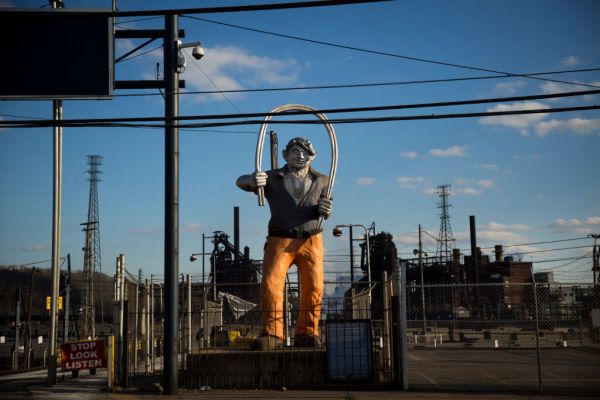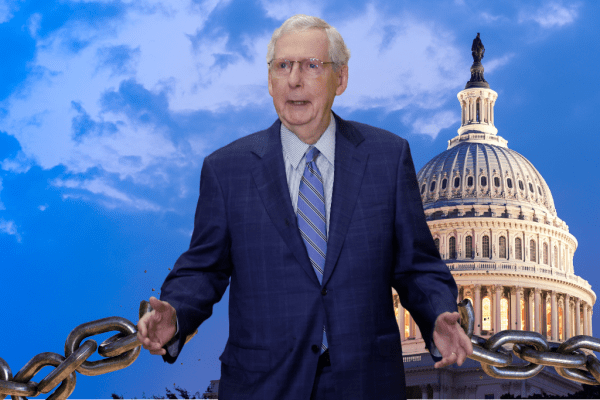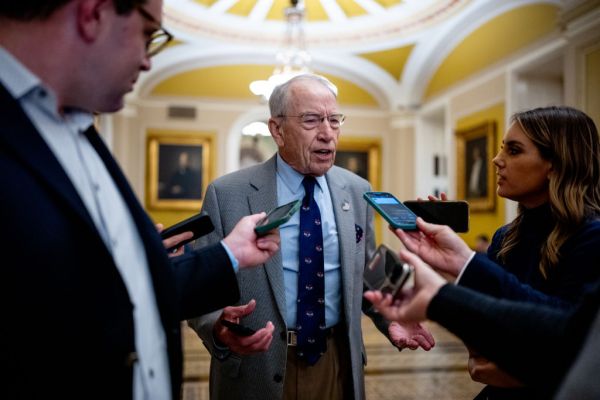Happy Wednesday! What will come first: President Joe Biden’s first address to a joint session of Congress set for April 28, or the Chicago Cubs’ offense managing to score more than three runs?
Quick Hits: Today’s Top Stories
-
The Food and Drug Administration and Centers for Disease Control (CDC) issued a joint statement yesterday recommending a nationwide pause in the administration of Johnson & Johnson’s COVID-19 vaccine due to six reported cases of vaccine recipients (out of 6.8 million doses administered) developing a rare and severe type of blood clot. The Advisory Committee on Immunization Practices will meet today to review the data and determine a path forward.
-
President Biden will announce a complete, conditions-free troop withdrawal from Afghanistan by September 11 of this year, a senior administration official told reporters yesterday. The drawdown will begin prior to the May 1 deadline the Trump administration negotiated with the Taliban last year, but won’t be completed by then.
-
Defense Secretary Lloyd Austin, meanwhile, announced yesterday the United States will reverse the Trump administration’s planned troop reduction in Germany and actually boost America’s presence in the country by 500 troops.
-
Iranian Deputy Foreign Minister Abbas Araghchi said Tuesday that the country will—in response to the attack on one of its nuclear facilities over the weekend—begin enriching some of its uranium to 60 percent. Tehran will, however, continue participating in Joint Comprehensive Plan of Action negotiations in Vienna.
-
The Brooklyn Center police officer who fatally shot Daunte Wright in Minnesota over the weekend announced her resignation from the force yesterday. The city’s police chief is stepping down as well.
-
The United States confirmed 75,762 new cases of COVID-19 yesterday per the Johns Hopkins University COVID-19 Dashboard, with 7.1 percent of the 1,074,262 tests reported coming back positive. An additional 893 deaths were attributed to the virus on Tuesday, bringing the pandemic’s American death toll to 563,426. According to the CDC, 35,762 Americans are currently hospitalized with COVID-19. Meanwhile, 2,590,736 COVID-19 vaccine doses were administered yesterday, with 122,295,530 Americans having now received at least one dose.

Public Health Officials Press Pause On J&J Vaccine
We probably don’t spend enough time talking about this: The United States’ COVID-19 vaccination effort is the envy of most of the world. Nearly 30 percent of our population is fully vaccinated, and 62.5 percent of our senior citizens are. On a rate basis, our 0.97 daily doses administered per 100 residents is higher than all but a few countries—and more than twice the European Union’s 0.47. But across the country, we’re starting to hit that inflection point where our quest for herd immunity will have more to do with vaccine demand than vaccine supply. And a development yesterday has the potential to dramatically affect uptake among the vaccine hesitant.
In a statement released early Tuesday morning, Dr. Peter Marks of the Food and Drug Administration’s Center for Biologics Evaluation and Research and Dr. Anne Schuchat of the CDC announced their agencies were recommending a nationwide pause on the administration of Johnson & Johnson’s COVID-19 vaccine due to six reported cases of cerebral venous sinus thrombosis—a rare and severe type of blood clot—among the 6.8 million vaccine recipients thus far. Of those six vaccine recipients, each of whom were women under 50, one died, and another remains in critical condition.
“I’d like to stress these events appear to be extremely rare,” acting FDA commissioner Dr. Janet Woodcock told reporters yesterday. “However, COVID-19 vaccine safety is a top priority for the federal government, and we take all reports of adverse events following vaccination very seriously.”
The move was met with bipartisan criticism for its potential to increase vaccine hesitancy over what appears at first glance to be a series of one in a million events. Former President Donald Trump called it a “terrible disservice to people throughout the world,” noting the Johnson & Johnson vaccine is “extraordinary” but that its reputation will now be “permanently challenged.” Democratic Sen. Brian Schatz of Hawaii made a similar case. “I respect the independence of the FDA and their need to evaluate risk,” he said. “But 6 out of 6.8 million is not a lot, and if they are going to land on ‘we reviewed the data and everything is fine,’ they need to be clear and quick and unequivocal.”
Scientists are still attempting to drill down on the causality, but FDA officials hypothesized Tuesday the rare clotting results from a combination of low platelet counts in the blood and the immune response triggered by adenoviral vector vaccines (the technology underlying both Johnson & Johnson’s shot and AstraZeneca’s, which underwent a similar pause in Europe last month). “The person being vaccinated makes an immune response, potentially, that actually involves their own platelets, or other parts of the coagulation system, and can cause this problem,” Woodcock said.
Because the side effect is so rare, it makes sense that it didn’t manifest until now. “When you vaccinate anywhere from 15,000 to 30,000 people with the vaccine, if the risk of this very rare event is one in a million, it would be statistically extremely unlikely that it would show up in the vaccine trial,” Dr. William Schaffner, a former CDC official and infectious disease and immunization expert at Vanderbilt’s School of Medicine, told The Dispatch. “You have to use it in the general population to detect really rare events.”
Looking just at the topline numbers—six cases of clotting out of 6.8 million doses, with only one being fatal—a nationwide pause may seem like overkill. The CDC reported 38,659 motor vehicle traffic deaths in 2018; you’re nearly 800 times more likely to die in a car accident driving to get your vaccine than from a blood clot after receiving it. And yesterday alone, 893 deaths were attributed to the disease from which the vaccine offers protection.
But that calculation disregards some important context: If the affliction does primarily affect younger women, the key denominator is not 6.8 million but something much smaller. And because the data show the clotting manifests six to 13 days after vaccination—symptoms include severe headache, abdominal pain, leg pain, and/or shortness of breath—the number of reported cases could rise above six now that recipients know what to look for.
And that, ultimately, is why the regulators made the decision. “The reason to pause is to say, ‘Is it really at this very low rate, or are there some that we’re missing?’ Because that would change the risk-benefit calculation,” Dr. Megan Ranney, an emergency physician and health policy professor at Brown University, told The Dispatch. The suspension will also provide time to establish how to treat these clots nationwide. “You don’t treat [them] the way that you would treat a regular blood clot,” Ranney said. “You have to treat it a little bit differently because of the low platelets.”
“The issue here with these types of blood clots is that if one administers the standard treatments that we, as doctors, have learned to give for blood clots, one can actually cause tremendous harm or the outcome can be fatal,” Marks told reporters. “So one needs to make sure that providers are aware that if they see people who have low blood platelets, or if they see people who have blood clots, they need to inquire about a history of recent vaccination and then act accordingly in the diagnosis and management of those individuals.”
Some public health officials argue that yesterday’s news should lead Americans to have even more confidence in the efficacy and safety of the vaccines. “I think it’s reassuring that the vaccine safety surveillance system that we have in this country is the best in the world. It’s better than it was 10 or 20 years ago, and this system was able to find six needles in a huge haystack,” Schaffner pointed out. “Even these extraordinarily rare events are being detected. They’re being investigated. Action is being taken. A lot of attention is being given to it. And I think the public should be reassured that we are on the top of our game in assuring vaccine safety.”
On the supply side, the Biden administration was adamant yesterday the pause won’t dramatically hamper vaccine availability. “Johnson & Johnson vaccine makes up less than 5 percent of the recorded shots in arms in the United States to date,” White House COVID-19 Response Coordinator Jeff Zients said. He noted the U.S. has already secured enough Pfizer and Moderna doses to fully vaccinate 300 million Americans (and that was before Pfizer’s CEO said yesterday the company will be able to produce 10 percent more vaccine doses by the end of next month than previously anticipated). Many Americans set to receive the Johnson & Johnson vaccine yesterday had their appointments canceled, but some states already began swapping in the mRNA vaccines—Pfizer or Moderna, which have not been tied to any clotting issues after approximately 200 million doses administered—instead.
The agencies are moving quickly: The CDC’s Advisory Committee on Immunization Practices (ACIP) is set to meet this afternoon (livestreaming at 1:30 p.m. ET, if you’re interested) to analyze the data and make a recommendation on how to proceed.
A Predictable Uptick in Inflation
U.S. consumer prices rose 2.6 percent year-over-year, the Labor Department reported Tuesday, and 0.6 percent in March alone—the largest one-month consumer price index (CPI) bump the U.S. economy has seen since August 2012. With economic activity beginning to trend closer to pre-pandemic levels—and trillions of dollars in federal spending coming down the pike—the data have some starting to worry about excess inflation.
The most striking CPI increases came in the energy sector, where prices for the average urban consumer rose 13.2 percent over the past year—the gasoline index shot up 9.1 percent in March 2021 alone. But if you exclude energy and food—the food index jumped 3.5 percent year-over-year—the overall CPI came in at only 1.6 percent. Some sectors even saw negative cost pressures: Consumer prices for apparel fell 2.5 percent over the past year, and 2.4 percent for medical care commodities.
Why the disparate trends among different sectors? “Since inflationary pressures are based around supply and demand, areas that have negative year-over-year inflationary pressures are areas where demand has not caught up to pre-pandemic levels,” Luke Lloyd, an investment analyst with Strategic Wealth Partners, told The Dispatch. “The areas that have positive year-over-year inflationary pressures [are] where demand exceeds pre-pandemic levels or those businesses were forced to raise prices to survive.”
Take the transportation industry: Demand for buses, trains, and airplanes plummeted during the pandemic as travelers sought what they perceived to be more COVID-safe alternatives. As a result, consumer prices for transportation services fell1.6 percent, but increased1.5 percent for new vehicles and 9.4 percent for used cars and trucks.
The drastic year-over-year increase in prices can partly be explained by the “base effect,” an economic term that contextualizes distorted growth trends by taking into account the starting point’s unusually high or low number of comparison.
In March 2020, a combination of pandemic-induced unemployment and government mandated business closures severely dampened consumer spending. “When you have all that going on and compare it to last year’s baseline numbers, of course things are going to increase in prices,” said Lloyd, who expressed surprise that the CPI didn’t surge even more over the past year.
“We have pumped trillions—multi-, multi-trillions—of dollars into the economy via stimulus packages, through this upcoming infrastructure bill, through COVID relief, small business support,” Lloyd continued. “Given all of that money that we pumped into the economy and we’re only up a little over 2 percent year-over-year is crazy.” Easing pandemic restrictions on business and the U.S.’ successful vaccine rollout have also boosted consumer demand for goods, a trend that will likely continue to increase inflation over the next few months.
Inflation is still trending below the Federal Reserve’s 2 percent target, which is based on the price index of personal-consumption expenditures rather than the consumer price index. But do President Biden’s massive spending packages run the risk of overheating the economy?
Decades of low-to-nonexistent inflation despite record federal spending have led some to believe it’s no longer a serious threat. “We have inflationary expectations that have been pretty well anchored for quite a while now,” said American Enterprise Institute visiting fellow Ramesh Ponnuru. “These warnings for now 12, 13 years of high inflation to come … just haven’t panned out.”
Ponnuru is skeptical the Biden administration’s spending spree will unsustainably drive up consumer prices—at least in the short term.* “I think market expectations already take account of government spending and projected government spending,” he told The Dispatch. But that doesn’t necessarily mean it’s not worth monitoring.
“Most of the spending under [Biden’s] proposal probably would not even begin for a couple of years,” noted Manhattan Institute senior fellow Brian Riedl—who will be testifying before the House Financial Services Committee on Biden’s infrastructure bill later today. “And so I think this becomes more of a concern in the middle of the decade rather than immediately.”
Worth Your Time
-
President Biden has been compared to FDR and LBJ early in his presidency—and he’s reportedly welcomed those comparisons. But on policy, the 46th president may be more similar to his immediate predecessor than partisans on either side of the aisle would care to admit. “We should regard Bidenism, in its current outline, as an attempt to build on Donald Trump’s half-formed, never-finished policy agenda, in the way that elements of Jimmy Carter’s program found their fullest expression in Ronald Reagan’s presidency,” Ross Douthat argues in his latest column.
-
Republicans have been sharply critical of congressional Democrats’ H.R. 1 election reform package since it was introduced, but it’s starting to face some criticism from the left as well. “The bill is actually too sprawling to summarize fairly at column length, which is in some ways the key thing to know about it,” Matt Yglesias writes in his latest Substack newsletter. “It represents a grab bag of ideas, some of which are populist messaging points, some of which are individual members’ pet ideas, and really only one of which—the anti-gerrymandering provisions—actually tries to tackle what I think of as a genuinely very serious problem in the country. Unfortunately, while the bill taken as a whole is ‘big’ and ‘sweeping,’ the actual anti-gerrymandering provisions are kind of weak and vague. And the bill also doesn’t really do anything to address concerns that have emerged since the 2020 election and the January 6 mob that Republicans may try to steal elections. Instead, it’s actually much more focused on campaign finance and government ethics stuff that is much lower-stakes, and some of which has drawn serious criticism from the ACLU and others.”
Presented Without Comment
Toeing the Company Line
-
Congress is back from recess, and so is Haley’s Uphill newsletter! In yesterday’s edition, Haley touches on lawmakers’ efforts to boost U.S. competitiveness with China, the Matt Gaetz situation, and President Biden’s failure thus far to follow through on his pledge to raise the refugee cap. She highlights one of the most tangible ways the United States can help Uyghurs and other oppressed minorities from Xinjiang: granting them priority refugee status. “If the U.S. government is serious about supporting Uyghurs, members of Congress should support this legislation,” senior program officer for the Uyghur Human Rights Project Peter Irwin told Haley.
-
In this week’s edition of The Sweep, Sarah illustrates just how much of a grip former President Trump still has on the Republican Party, and how that could hurt the GOP’s chances for control of the Senate in 2022. She also takes a look at why candidates launch campaigns when they do, and Chris Stirewalt drops by to provide his $0.02 on the increasingly strained relationship between Republicans and big business. “Until the party can understand that it takes both affluent and working-class voters to win, they’re in for plenty more unhappy days,” he writes.
-
Not to ruin your morning, but David’s French Press last night focused on the small—but increasing—likelihood that a Third World War is brewing while America continues to look inward. “I hope I’m being alarmist,” he writes. “It’s infinitely preferable to engage in Twitter wars over Dr. Seuss and diversity training than it is to be shocked at the news that an American carrier is in flames off the coast of Taiwan. But it’s a simple fact that America is turning inward while our geopolitical rivals have closed the military gap and remain laser-focused on their own national interests.”
-
Andy Smarick of the Manhattan Institute dropped by The Remnant yesterday to chat with Jonah about the folly of never-ending school closures, the pandemic culture wars, and divisions among conservatives.
Let Us Know
The pandemic has, in many ways, revealed how irrational some of our ideas about risk tolerance are. Some people are hesitant to reenter society even after getting vaccinated, but drive dozens of miles every day. Others have little to no concern about contracting COVID-19, but are wary of incredibly rare vaccine side effects.
Do you fall in either of these camps? Why do you think people worry more about certain risks than others?
Reporting by Declan Garvey (@declanpgarvey), Andrew Egger (@EggerDC), Haley Byrd Wilt (@byrdinator), Audrey Fahlberg (@FahlOutBerg), Charlotte Lawson (@charlotteUVA), Ryan Brown (@RyanP_Brown), and Steve Hayes (@stephenfhayes).
Correction, April 14, 2021: This newsletter was updated to more accurately reflect Ponnuru’s sentiment regarding inflationary fears.








Please note that we at The Dispatch hold ourselves, our work, and our commenters to a higher standard than other places on the internet. We welcome comments that foster genuine debate or discussion—including comments critical of us or our work—but responses that include ad hominem attacks on fellow Dispatch members or are intended to stoke fear and anger may be moderated.
You are currently using a limited time guest pass and do not have access to commenting. Consider subscribing to join the conversation.
With your membership, you only have the ability to comment on The Morning Dispatch articles. Consider upgrading to join the conversation everywhere.